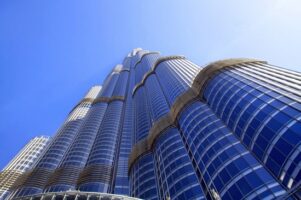DESIGNING STEEL HIGH-RISE BUILDINGS: CHALLENGES AND INNOVATIONS
Designing Steel High-Rise Buildings: Challenges and Innovations
The design and construction of steel high-rise buildings have evolved significantly over the years. These towering structures, which define modern cityscapes, are the result of innovative engineering, advanced materials, and a commitment to pushing the boundaries of what is possible. However, designing steel high-rise buildings is not without its challenges. In this article, we will explore the key challenges and the innovative solutions that have transformed the way we design and build these monumental structures.
Challenges in Designing Steel High-Rise Buildings
1. Structural Integrity
Maintaining the structural integrity of a high-rise building is a paramount concern. The forces exerted on a tall structure can be immense, especially in regions prone to seismic activity or extreme weather conditions. Ensuring the building can withstand these forces is a significant challenge.
2. Wind and Seismic Loads
Steel high-rises need to be designed to withstand wind and seismic loads. The dynamic nature of these forces requires innovative approaches to ensure stability and safety. Engineers employ cutting-edge technology and materials to address these challenges.
3. Safety and Fire Resistance
Safety is a top priority in high-rise building design. Evacuation and firefighting strategies become more complex as the building height increases. Engineers must develop robust fire resistance systems and evacuation plans that can be executed effectively in emergencies.
4. Environmental Impact
As the world grapples with environmental concerns, high-rise buildings must be designed with sustainability in mind. Reducing energy consumption, optimizing material usage, and incorporating green technologies are key components of innovative high-rise design.
5. Cost Control
The construction of steel high-rise buildings can be expensive. Cost control is a constant challenge, requiring architects and engineers to find innovative ways to balance budgets while maintaining the desired level of quality and safety.
Innovations in High-Rise Building Design
1. Advanced Materials
The use of advanced materials, such as high-strength steel and concrete, has revolutionized high-rise construction. These materials offer greater durability and allow for more efficient and lighter designs, ultimately reducing construction costs.
2. Parametric Design
Parametric design involves the use of computer algorithms to generate and optimize building forms. This approach allows architects and engineers to explore a wide range of design options and select the most efficient and aesthetically pleasing solutions.
3. Building Information Modeling (BIM)
BIM technology enables a collaborative and data-driven approach to building design. It facilitates improved communication and coordination among project stakeholders, leading to more efficient construction processes and reduced errors.
4. Wind Tunnel Testing
Innovations in wind tunnel testing help engineers better understand the aerodynamic behavior of high-rise buildings. This allows for the design of structures that can better withstand wind forces, resulting in increased safety and comfort for occupants.
5. Energy-Efficient Systems
To address environmental concerns, high-rise buildings are equipped with energy-efficient systems, including advanced HVAC, lighting, and insulation technologies. These systems reduce energy consumption and lower operational costs.
6. Seismic Dampers
The installation of seismic dampers, such as tuned mass dampers and base isolators, enhances a building’s ability to absorb and dissipate seismic energy. This technology significantly improves the structural integrity of high-rises in earthquake-prone regions.
7. Fire-Resistant Materials and Systems
Innovations in fire-resistant materials and systems ensure the safety of occupants in high-rise buildings. Fire-resistant glass, coatings, and compartmentalization strategies are crucial components of modern fire safety solutions.
8. Green Building Certifications
Many high-rise buildings pursue green building certifications, such as LEED or BREEAM, to demonstrate their commitment to sustainability. These certifications encourage the implementation of eco-friendly practices and technologies.
In conclusion, designing steel high-rise buildings presents a series of complex challenges, but the industry has responded with innovative solutions. From advanced materials and parametric design to energy-efficient systems and green building certifications, the future of high-rise construction is both ambitious and sustainable. As technology continues to advance, we can expect even more innovative solutions to shape the skylines of our cities and provide a safer, more sustainable urban environment.


